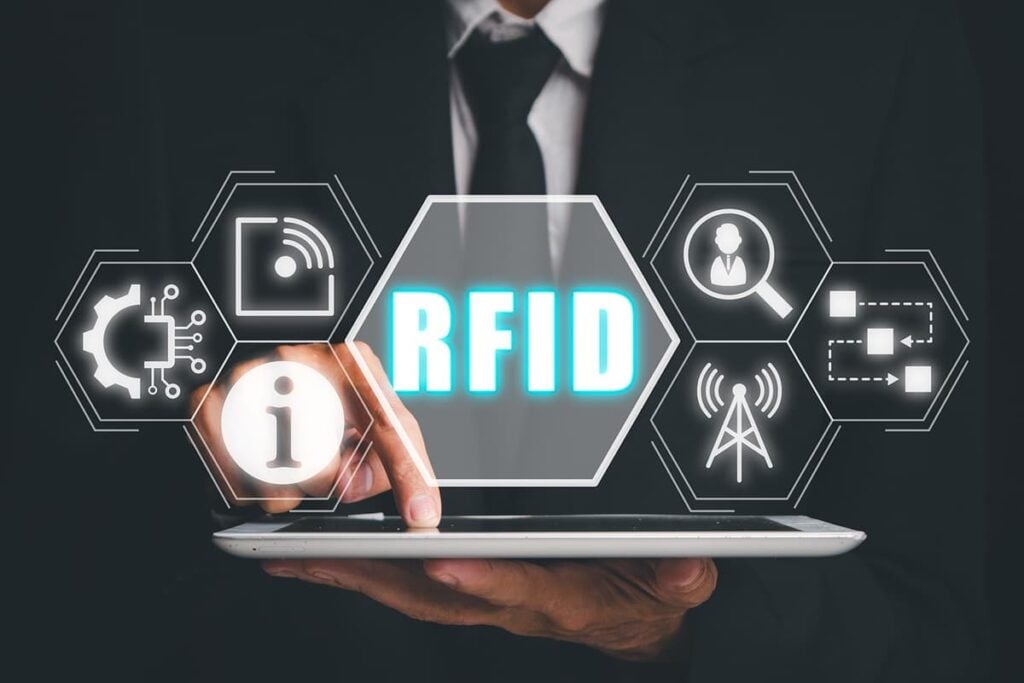A Smart Indoor Positioning System for Retail Automation
Table of contents

For the last few years, we’ve been hearing about the retail apocalypse, though we would characterize it more as a retail extinction event. The difference being that until a couple of months ago, the demise of many brick-and-mortar businesses was a long, drawn-out affair. No more. COVID-19 has caused a true retail apocalypse – goodbye, JCPenney, Pier One, J Crew, and company – by hastening the death of these ailing giants. There’s obviously a knock-on effect on tech companies shopping retail automation solutions. However, for one small Silicon Valley startup spun out of MIT, the novel coronavirus brought an unexpected opportunity for its thermal-based indoor positioning system.
You’re Being Followed
We’ve been covering the automation of retail for quite some time, from cashierless stores to robotic fulfillment centers in retailers like Walmart. The real money, of course, is in marketing. But it’s no longer necessary to blast messages and advertisements across a black hole and hope a few escape the gravitational pull of customer indifference. Today’s retail tech promises marketing precision by attempting to track and predict customer behavior in real-time both online and in the physical world.
A company like Zenreach, for example, makes a pretty good case of ROI for its WiFi hotspot marketing software that tracks how well the store’s message is doing based on how many people walk through the door. Audio beacons are another way that stores can directly track customers by using sound to locate people through their smartphones. These technologies do start to leak into the creepy zone when you realize that the devices are communicating about you and your shopping behavior at a frequency you can’t detect. They also think you’ve put on a bit too much weight with all of the COVID-19 stress eating.
In fact, there are quite a few indoor positioning systems that scientists and startups have developed to track motion and trajectory. Not all of it is directed at marketing. WiFi motion sensors, for example, use WiFi signals for various smart home applications like security and even in-home elderly care, with algorithms trained to detect falls and too many trips to the cookie jar.
Briefly About Butlr
And then there’s the indoor positioning technology from Butlr that is designed for both retail automation and the smart home market, using thermal sensors and artificial intelligence to precisely track and predict the movement of people. Founded only last year, Butlr raised an undisclosed Seed round last year from 500 Startups. While already profitable – more on that below – the company is raising money in what founder and CEO Honghao Deng describes as an oversubscribed round if all the investors come through.
Butlr may be new to the tech scene but the technology under the hood has been under development for years, particularly during the time the team spent at MIT Media Lab City Science research group, led by Kent Larson. Yeah, we didn’t know who he was either, but he has his own Wikipedia page for being one of the world’s chief thinkers and tinkerers around urban design and technology. Part of that work has involved building wireless ambient sensing networks that can capture people’s behavior without violating their privacy, Deng explained. The theory, in part, is that such a system can provide intelligence about how people use city services to inform future iterations of urban planning. Further into the future, we could build smart cities that interact and respond to us intuitively.
Deng’s own research at MIT focused on these sorts of “responsive-built environments,” and he also worked as a research scientist at Airbnb Samara, the company’s offshoot design studio. Deng recruited some of the gang from his previous project teams to help lead Butlr, including CPO Jiani Zeng, CTO Ziran Zhang, and CDO Ioanna Sotiriou. Incidentally, Larson is the company’s technology advisor.
Butlr at Your Service
Butlr’s technology is based on a network of wireless thermal sensors that can fit in the palm of your hand and run for more than two years on a single battery. The sensor itself is similar to the infrared sensors used to activate the flush mechanism on automatic toilets in public restrooms (that no one can go into anymore). The company claims the hardware is only about 10% of the cost of a smart camera but with edge-computing capability. Algorithms take multiple pixels of thermal data, which in action looks like a grid of squares blinking as the sensor picks up a person’s heat signature, and translate that into real-time indoor positioning.

But that’s not all. “We translate this kind of behavior data into analytics and also powerful automations for both retail and also living space,” Deng said.
In retail, the system knows how many people are in a store and in front of which specific shelves, tracking them all the way to the checkout counter. The idea is to produce the same sort of analytics possible from following online clicking behavior but in the offline world of the brick-and-mortar store. Such data can help retailers, for example, optimize product placement based on foot traffic.

Butlr signed a $1 million contract with an undisclosed company to begin rolling out its sensor systems in 200,000 stores. The company also started to build upon the capabilities of its indoor positioning system so that the platform could understand shopper behavior well enough to push coupons or other promotions for specific items or services customers showed interest in.
And then a little pandemic hit the world.
The Pandemic Pivot
It didn’t take long for Butlr to pivot and leverage its technology to meet this new challenge, which in retrospect seems especially suited to the problem at hand – making sure people keep the hell away from each other. Originally, Butlr’s existing clients had proposed the startup turn the thermal sensing network into a body temperature sensor. A pilot test showed it could kind of work as a frontline screening tool, but Deng said it quickly became apparent that Butlr could be put to better use by helping manage store occupancy and queues to maintain social distancing.

“Many grocery chains are worried about the situation right now, especially for protecting their staff members,” Deng noted.
Using QR codes and an app, customers can get real-time info about queue waiting times and store occupancy. The system also provides information about average occupancy throughout the day so that shoppers can find the optimal time to hoard replenish toilet paper and sanitizer. On the flip side, stores can minimize or eliminate current contact points, such as having employees manually manage queues, by automating when customers can enter the store safely.

Deng said there is a lot of interest in Butlr from U.S. retail customers, and it is already working with a California-based grocery chain to install the system. “We’re seeing very strong demand. Hopefully, we can help as many stores as possible, especially when more retail stores start to gradually open up.”
Smarter Living
The long-term goal, of course, is to continue to develop both Butlr’s retail and smart home solutions. The latter platform is like having Alexa but without the annoying misunderstandings and 24-hour sound surveillance. The algorithms learn how to interpret certain behaviors in order to adjust automatically as a person interacts with a space. For instance, as a person moves through her apartment, the lights may adjust as she sits at a desk or plops down on the couch to read. After struggling through a TPS report, she may fall asleep on the couch, and Butlr dims the lights and closes the blinds. Nighty, night.

Deng also sees the potential for other use cases. “The sensors are particularly useful in assisted living,” he said. “We can detect whether someone falls down or help people with kinetic challenges through seamless automation.”
Conclusion
We may never find a better reason to embrace advances in IoT-enabled smart cities, urban air mobility, robotic healthcare, and other autonomous technologies than a highly infectious virus. Automation becomes less about cheap convenience and more about the value of safe and reliable systems for delivering goods and services. The intelligent indoor positioning system from Butlr is certainly selling us on the idea that we can have both without living in a surveillance state – where privacy is something we have automatically rather than hoard instinctively.
Sign up to our newsletter to get more of our great research delivered straight to your inbox!
Nanalyze Weekly includes useful insights written by our team of underpaid MBAs, research on new disruptive technology stocks flying under the radar, and summaries of our recent research. Always 100% free.















